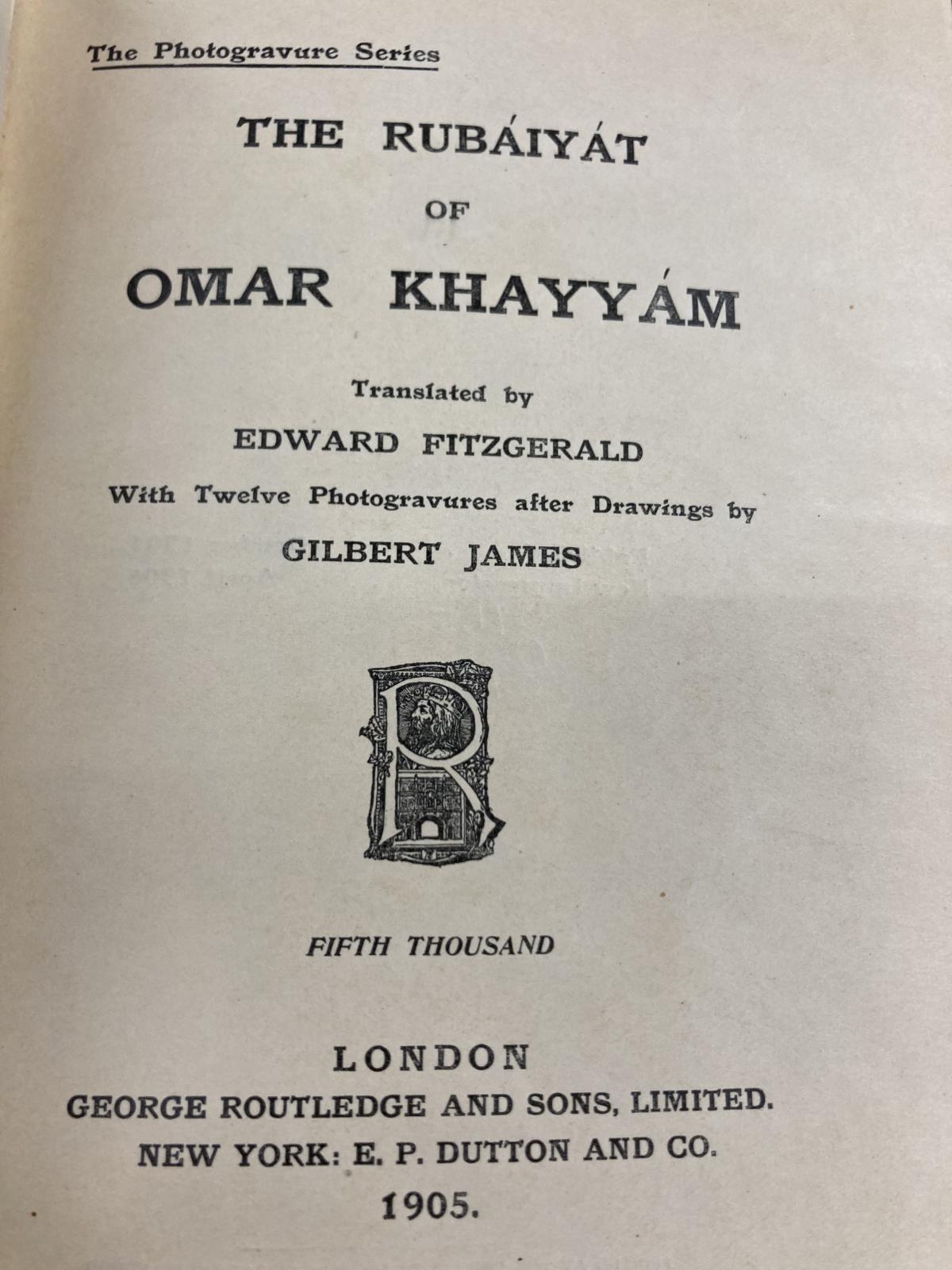This edition of Omar Khayyám’s Rubáiyát, translated by Edward Gerald features twelve special photogravures created by Gilbert James. Published in 1905, this edition is part of “The Photogravure Series,” as it states on the title page, seen in Figure 1. The novel’s title page suggests that it could have been published by one or two places, or perhaps both, collaboratively, for different audiences. On one hand, it states “London” and then “George Routledge and Sons, Limited”, while on the other hand, it states “New York: E. P. Dutton and Co. 1905”.
Beyond the personal inscription in this edition, which is discussed in more depth in earlier exhibit posts like “Description of edition” and “Gift books and Orientalism”, the illustrator of the photogravures is an important feature to explore, as the photogravures set this edition apart from other ones. According to the Getty Conservation Research Foundation Museum, Gilbert James was an English artist, painter, and illustrator. Born in the Liverpool urban district of Englad, United Kingdom, there is evidence of his work between the years 1886 and 1926, and that he passed away in 1950. While this is the only information available in regards to James, we can further analyze this time period’s artwork to understand James’ photogravures.
Towards the end of the 19th century, impressionism was the primary art movement running through Europe, which emphasized capturing the moment through time of day, as well as painting outdoor environments. The influence of impressionism is clear in James’ photogravures, as many of his photogravures, in figure 2 and 3, clearly demonstrate his intentions of capturing the moment in illustration in connection with the poem, which also has themes of staying in the moment, to put it simply. The early 20th century art movement expressionism is also prevalent in the photogravures, though less obviously. It could be argued that James’ uses expressionist style to highlight emotion and feelings over the imagery itself, especially through symbolism, which connects well to James’ goal of representing the poetry.
After further research into publisher details, it is clear that George Routledge, an English publisher, began “George Routledge and Sons, Limited” in London. Routledge achieved great success for publishing Routledge’s Railway Library, which made books more accessible and affordable to the public audience, and due to this success, was able to open publishing branches in other cities, including New York – this accounts for the double New York and London addresses on the title page. According to some expert collectors’, since London is the first address on the title page, above New York, then this 1905 inscripted edition was first published in London and originated there. This certainly could have been assumed from the inscription inside the cover, as W. E. de B. Whittaker and E. H. Holden are British, but understanding the publishing addresses on the title page confirms this.




